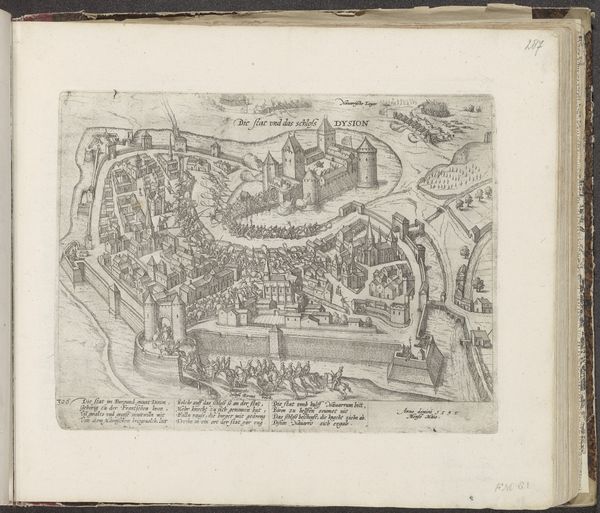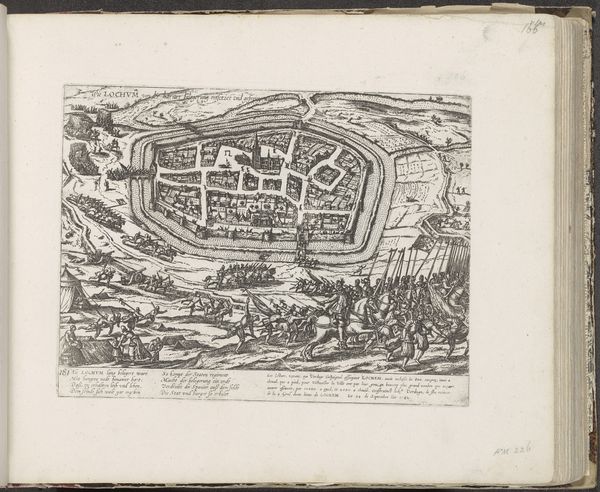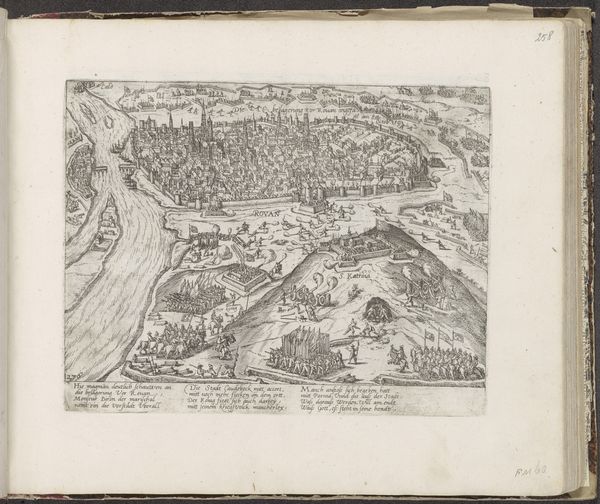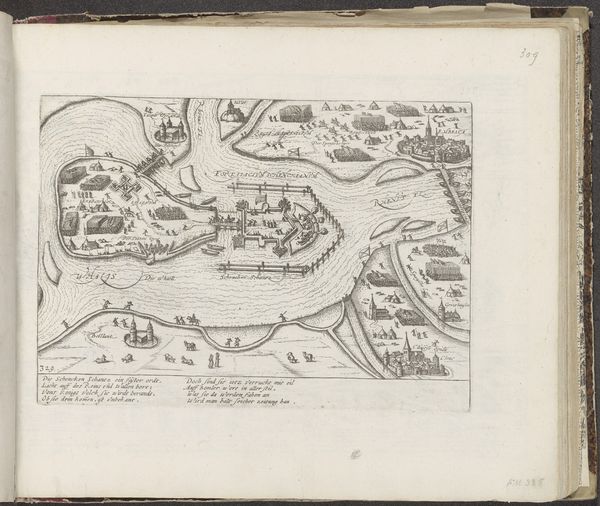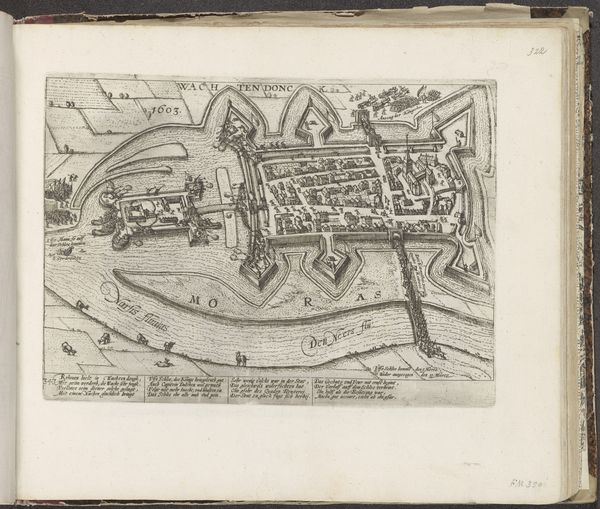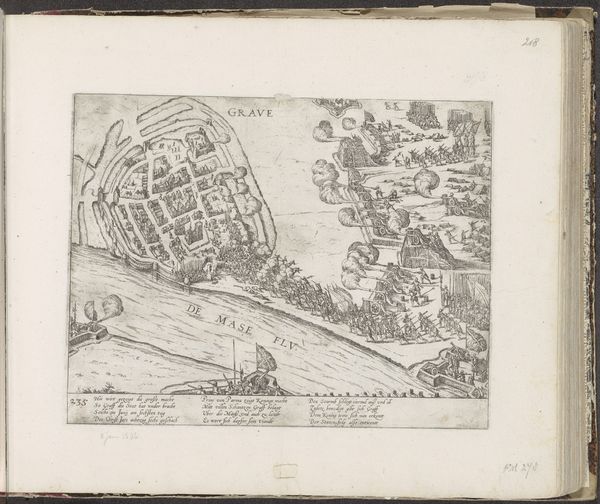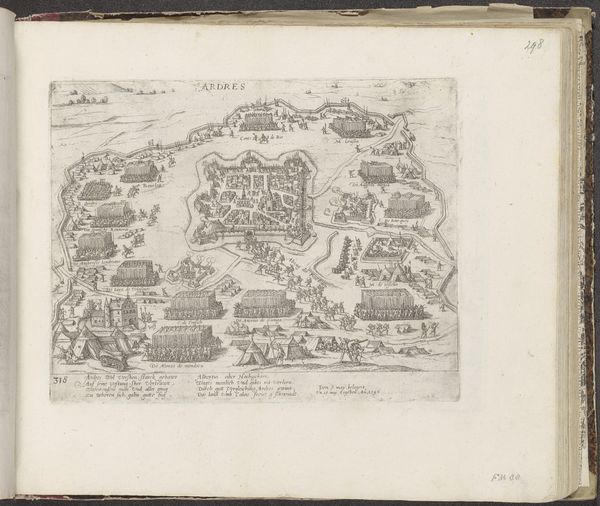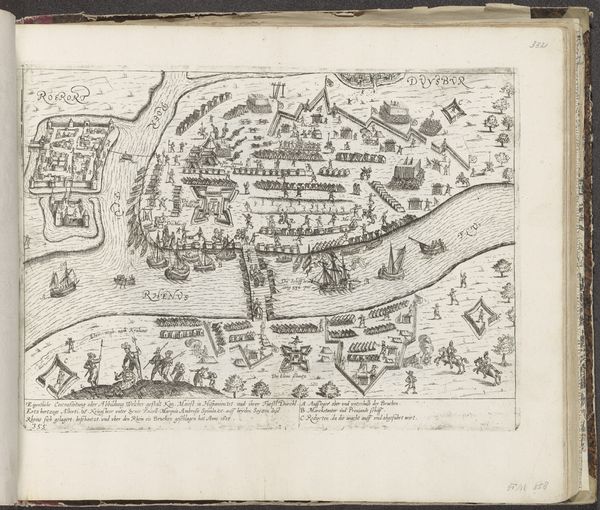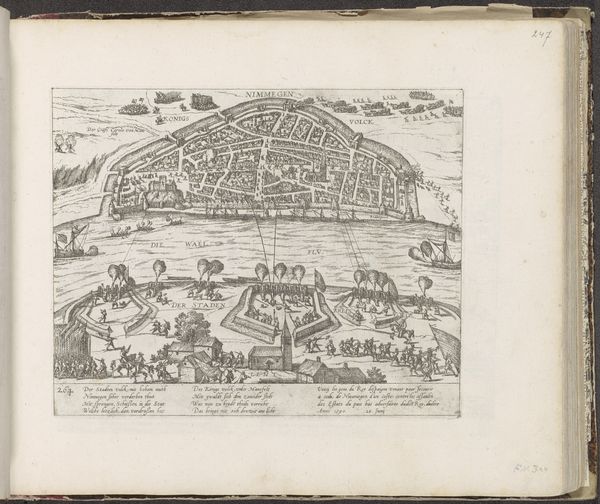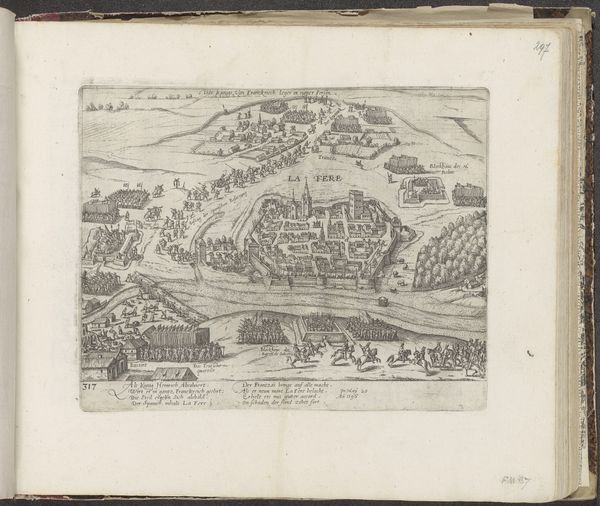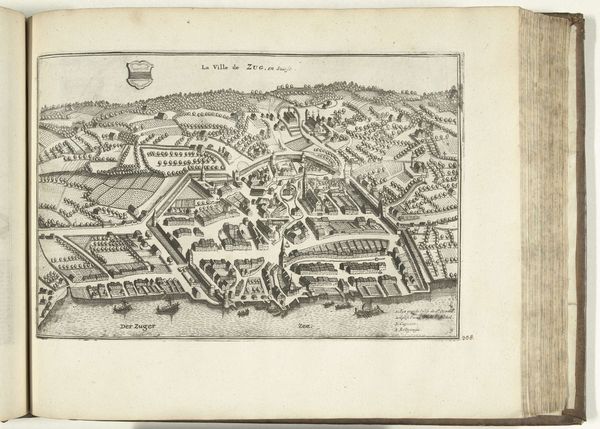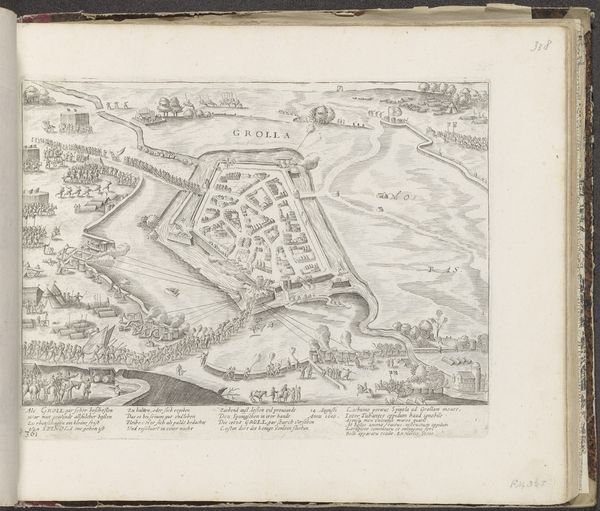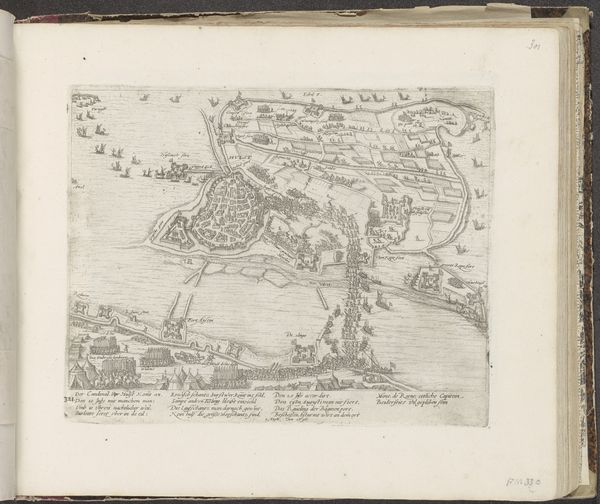
print, engraving
#
medieval
#
pen drawing
# print
#
pen sketch
#
sketch book
#
landscape
#
personal sketchbook
#
ink drawing experimentation
#
pen-ink sketch
#
ink colored
#
pen work
#
sketchbook drawing
#
cityscape
#
sketchbook art
#
engraving
Dimensions: height 208 mm, width 284 mm
Copyright: Rijks Museum: Open Domain
Curator: This engraving, “Kinsale in Ierland gaat aan Elizabeth over, 1602” by Frans Hogenberg, made between 1602 and 1604, is really quite fascinating. What catches your eye initially? Editor: Well, the sheer density of the linework is striking. It feels less like a pristine map and more like a feverish document of a very particular moment. It’s almost overwhelming! What do you see when you look at it? Curator: Exactly. Think about printmaking at this time. The labour involved in producing these images was intense. The engraver isn't just depicting Kinsale, they are mediating information for mass consumption. Notice the text framing the image; what purpose does that serve, given the target audience? Editor: The text almost makes it seem like a piece of propaganda. Did the intense labour involved affect its reception? Was it seen more as a tool than a work of art? Curator: The function informs its meaning. It's a tool, yes, but one deeply embedded in the socio-political landscape. This print was not only disseminating news, but it shaped public perception and perhaps even influenced further resource allocation to this conflict. It collapses high art and something more functional, no? Editor: That's true, I hadn't thought about the economic implications and the effort gone to making this kind of medium in that period. Did the common person see and read prints like these? Curator: Considering literacy rates, access might have been limited, with distribution centered around more literate segments of the populace or perhaps through public postings read aloud. We should consider this in thinking about materiality; it's not just the ink and paper but also who has access to these materials. Editor: It makes you wonder about the engraver’s own political leanings, considering the labour involved. Thanks, that’s given me a completely different way of thinking about this piece! Curator: Precisely. Materiality opens to all kind of interpretations, even those we hadn't first intended to think about.
Comments
No comments
Be the first to comment and join the conversation on the ultimate creative platform.
